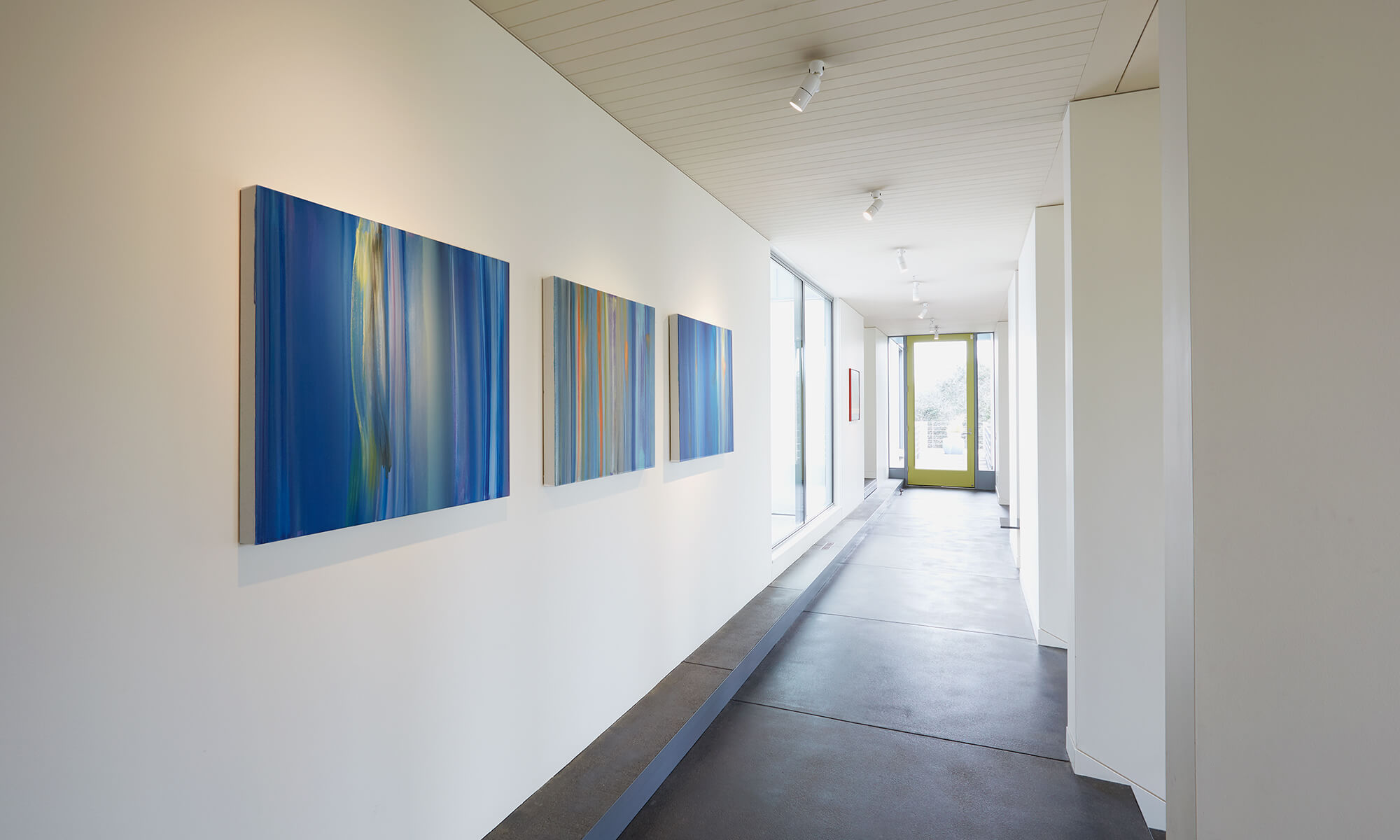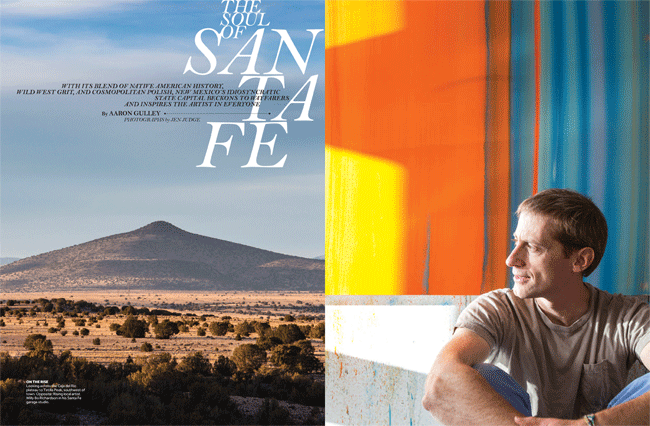February/March 2013 issue of print publication DestinAsian. DestinAsian is an award-winning travel magazine in the Asia-Pacific region. Article by Aaron Gulley, Photography by Jen Judge.
I’ve also attached a PDF of the article “The Soul of Santa Fe”: DestinAsian Santa Fe Article.PDF
Excerpt from the article:
Notwithstanding food and architecture— and even writing— there’s an undeniable romance and import to painting, which is why I take a friend’s advice and contact Willy Bo Richardson, a rising star in contemporary art. “Come over to the studio and we can talk,” he replies when I e-mail him. Unlike New York, in Santa Fe there is a generosity of space and time.
Richardson, 38, lives in an adobe with his wife, Kim, and five-year-old-daughter, Audrey, and he paints in a bright, cramped attached garage that he’s converted to a studio. Though he’s shown in galleries from New York to London and sells paintings for more than most people spend on a car, Richardson is boyish, friendly, demure. His biography is startlingly similar to Emily henry’s: his parents moved to New Mexico in the ’60s and raised him on a commune; he moved to the East Coast to make his name (New York in this case), but returned to Santa Fe because he simply couldn’t stay away.
“People come here for the light and the space. It’s a good place to work out ideas and to think,” he says when we meet. He tells me that he couldn’t produce the works he does if he didn’t live in New Mexico. “Coming from New York, you fill yourself up with information. This is a good place to actually look at that information and let it settle in.”
It’s a side of Santa Fe that I take for granted. Cocoa brown hills stippled by dark green piñon trees loom east of town, while to the west scraggly empty desert rolls off as far as you can see. The landscape is sublime, but it’s the emptiness that’s truly affecting. The forever blue emerald sky is so wide and open that sometimes it feels like it could swallow you. On nights that I write into the silent hours, when I’m at a loss for words, just walking out into the desert and sitting a while beneath the stars can free up my mind and help me find my voice. It seems like a small thing but I realize now how powerful this place can be. Richardson adds, “You can’t live here without grappling with this incredible, vast expanse.”
Richardson paints wall-size canvases in fluid, vertical strokes of bold color. He shows me an orange and blue diptych, and you can feel Santa Fe’s spaciousness in the movement of the paint as well as the town’s struggling influences and incongruities in the contrasting tones. The painting, one in a series called “Music to drive To”, is nothing like Vigil’s exodus. And yet the two live side-by-side and somehow manage to blend under the wide umbrella of Santa Fe art.
Lately, Richardson tells me, in addition to painting he’s been teaching at Santa Fe University of Art and Design. “I have a student, a 60-year-old Hopi man,” Richardson says. The idea of a young, Anglo, contemporary painter instructing an older Native American in abstract art strikes me as a juxtaposition fit for Santa Fe. Richardson continues, “At one point he was making his art, and his gallery stopped him and said, ‘No, we like the buffalos and the eagles.’ He could sell a painting for US $400 because it has a buffalo on it, but I say screw that. I told him to learn the real story and sell it for a couple thousand.”
A thousand years after people first inhabited the town site, four hundred years after it was founded, and one hundred years after the decision was made to market its cultural heritage, Santa Fe continues to evolve and continues to grapple with what’s true. It’s impossible to say for sure, though I feel a little more certain when I wake at dawn a few mornings after visiting Richardson. As the black horizon line of the Sangre de Cristo Mountains to the east sharpens with the approaching sun, ribbons of cloud glow pumpkin and coral and tangerine against strips of indigo and periwinkle sky— just like Richardson’s canvas. The color and intensity is something I’d have sworn couldn’t exist in nature, and yet here it is. And my first instinct, the only thing I can think about doing, is to sit down and write.

